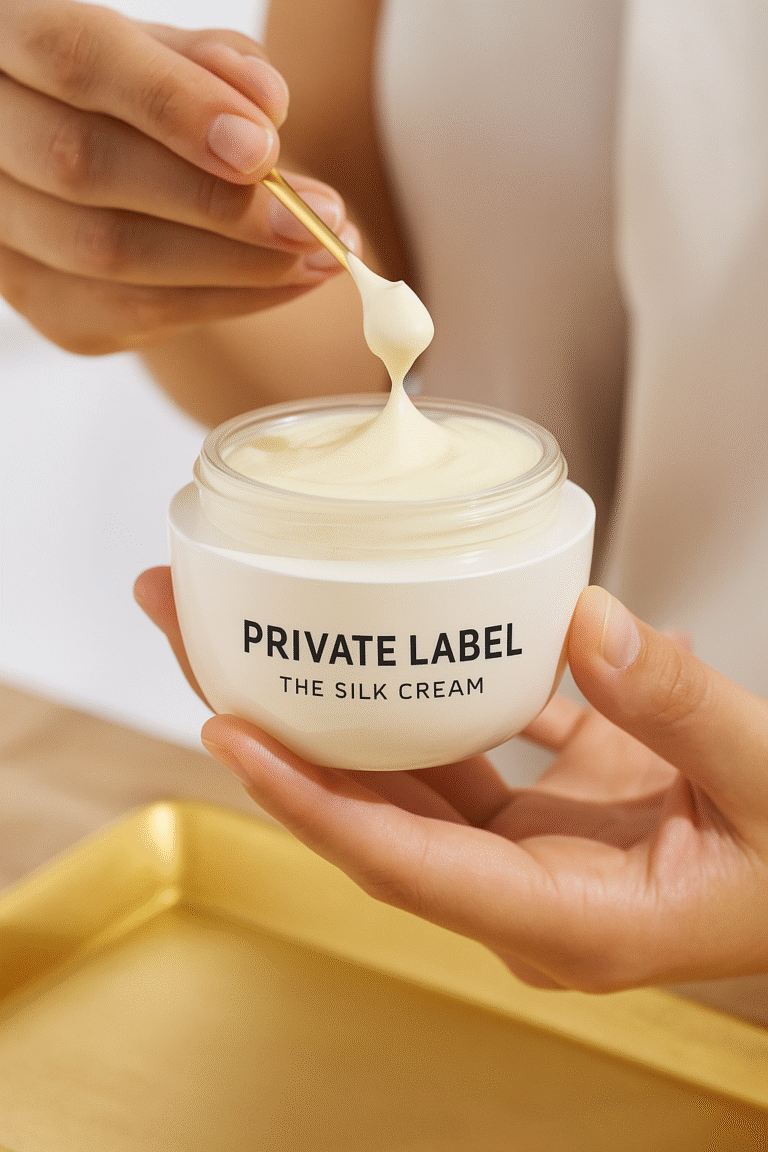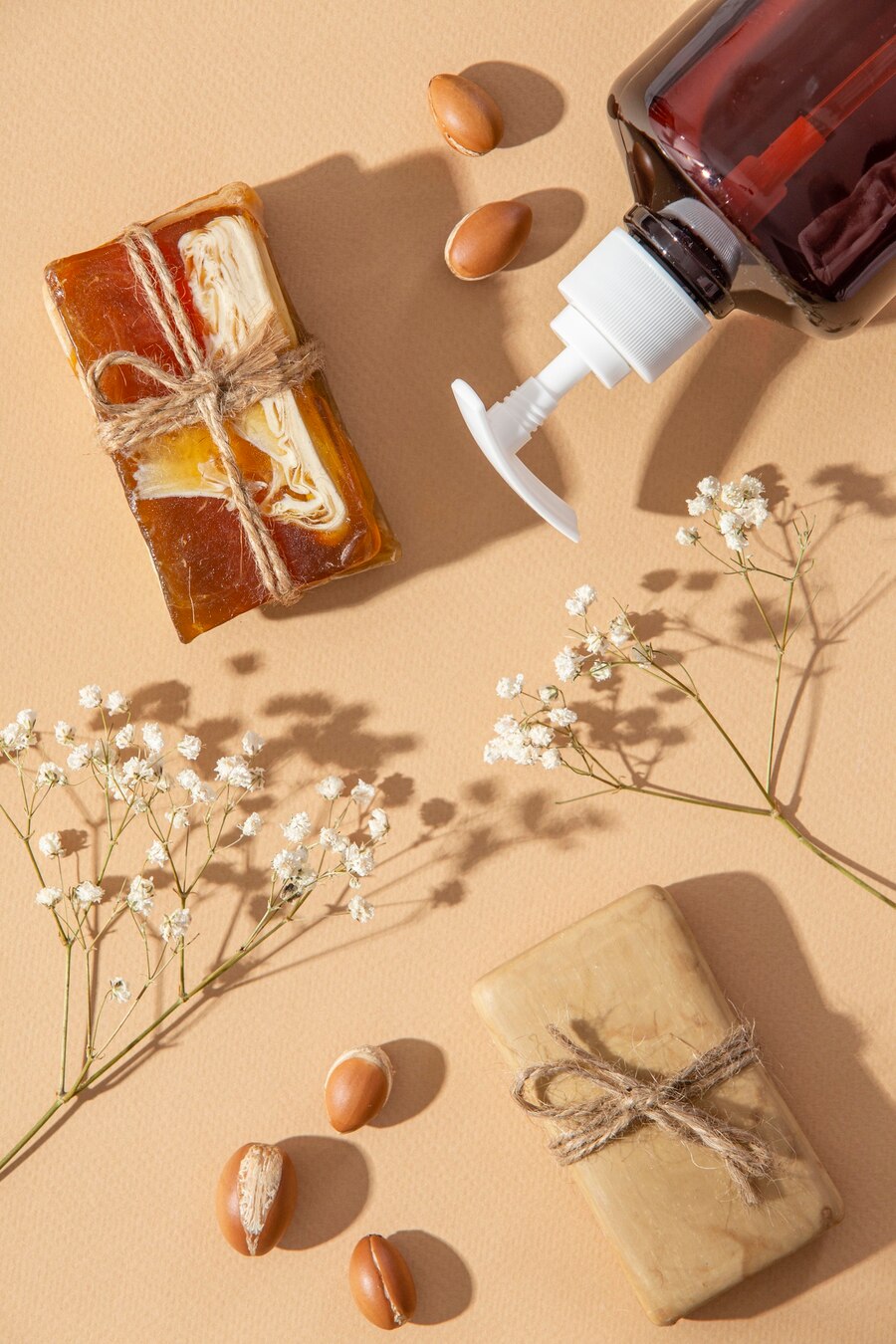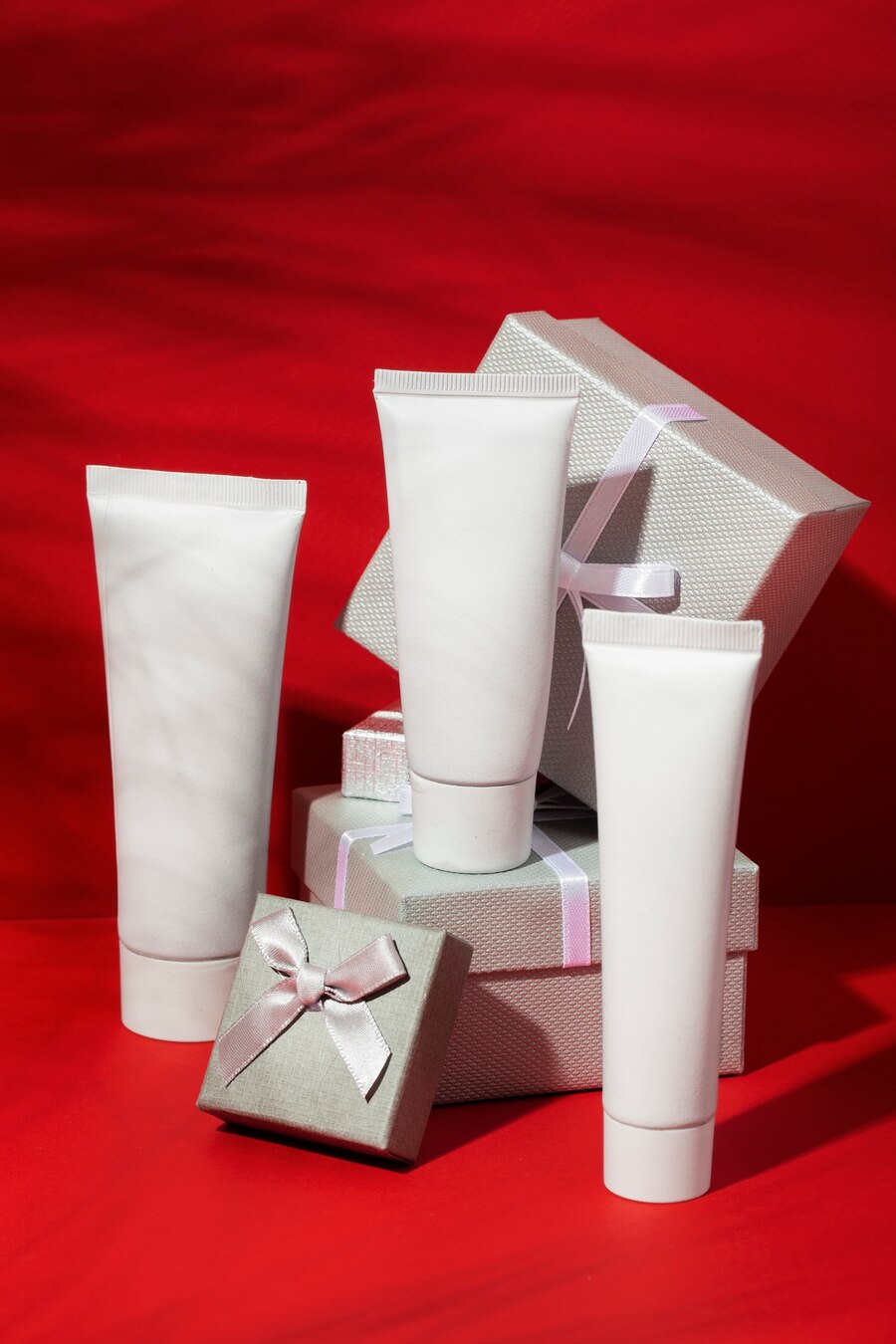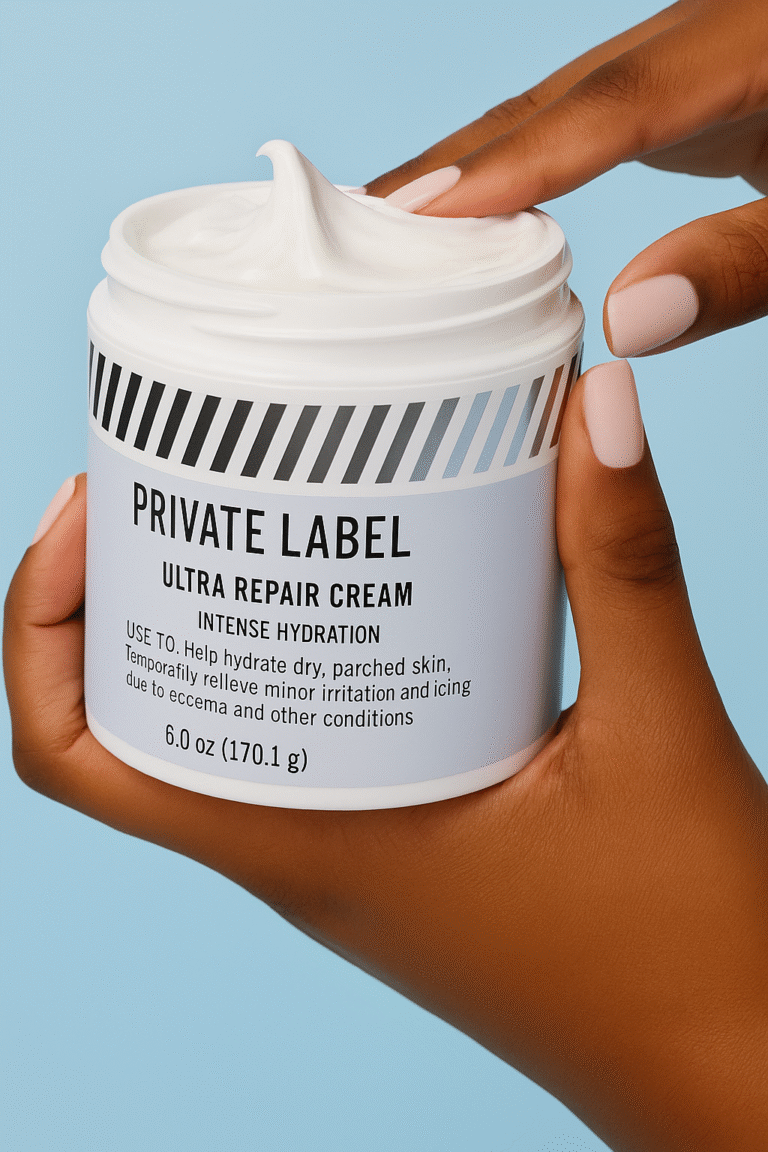Your Trusted Moisturizer and Face Cream Manufacturer
We help you launch faster, start smaller, and stand out with custom formulas, pro-grade quality, and trend-driven skincare that sells — all built to grow with your brand.

Private Label Moisturizer and Face Cream
-

Private Label Daily Moisturizer with Ceramides & Niacinamide – Samples
$5.00 Add to Quote -
Sale!

Private Label Hydrating Gel Creams (Water-Based / Oil-Free) – Samples
$5.00Original price was: $5.00.$4.00Current price is: $4.00. Add to Quote -

Private Label SPF Day Moisturizer (Moisturizer + Sunscreen) – Samples
$5.00 Add to Quote -

Private Label Night Cream with Peptides / Niacinamide – Samples
$5.00 Add to Quote -
Sale!

Private Label Brightening Cream with Vitamin C / Arbutin – Samples
$5.00Original price was: $5.00.$4.00Current price is: $4.00. Add to Quote -
Sale!

Private Label Sensitive Skin Creams (Fragrance-Free, Hypoallergenic) – Samples
$5.00Original price was: $5.00.$4.00Current price is: $4.00. Add to Quote -

Private Label Anti-Aging Creams with Retinol or Collagen – Samples
$5.00 Add to Quote -

Private Label Multi-Use Face & Body Creams (Family-Size) – Samples
$5.00 Add to Quote
Empower Your Brand with Metro Private Label: Your Trusted Private Label Moisturizer and Face Cream Manufacturer
Custom Formulation, Built Around Your Brand
Packaging That Sells, Sustainably
Quality That Keeps Customers Coming Back
Marketing Support That Moves the Needle

More Than Just a Moisturizer and Face Cream Manufacturer

🚀 Faster Time to Market
We help you move fast—whether you're rushing to catch a trend or need reliable restocks. Our flexible production timelines make sure you’re always in stock and on schedule.

🎯 Products That Actually Sell
We develop formulas based on what customers are already searching for—like ceramide-rich barrier creams, vitamin C glow gels, and retinol night moisturizers. No guesswork, just smart-selling skincare.

💰 Low MOQs, Better Margins
Start small without sacrificing quality. Our low minimum order quantities give you room to test and grow, while keeping your cost-per-unit in a range that leaves healthy margins for your business.

💡 Full Support, Zero Headache
Working with us means you’re not doing it alone. We’re here to make your private label skincare journey smoother, smarter, and more successful. From helping you decode industry regulations and ingredient restrictions to advising on target claims, testing, and certifications, our team is your behind-the-scenes support system. We combine technical know-how with real market insight, so every decision you make is backed by data, not just guesswork.
Why Partner with Metro Private Label for Your Moisturizer and Face Cream Line?

FAQs Moisturizer and Face Cream Products
- It depends on the complexity of your request, but here’s a rough idea:
- Stock formula with existing packaging: as fast as 4–6 weeks
- Custom formula + custom packaging: usually 8–12 weeks




Metro Private Label in Numbers
Your Essential Guide to Moisturizer and Face Cream Manufacturing Excellence
Table of Contents
Understanding the Role of Moisturizers in a Skincare Line
- It protects the skin barrier, which is your skin’s natural shield against irritation, dehydration, and environmental stress. That’s why you’ll often see ingredients like ceramides, cholesterol, and fatty acids in barrier-focused creams—we use them to reinforce what the skin already does naturally.
- It improves skin texture and comfort, by smoothing rough patches, softening lines, and locking in hydration. This isn’t just about how the skin feels, but how confident the customer feels when they use your product. We always say: when your moisturizer leaves skin feeling healthy and balanced, you’re halfway to earning a repeat customer.
- It helps deliver actives, meaning it can be a carrier for key ingredients like niacinamide, hyaluronic acid, retinol, vitamin C, or peptides. A well-designed base ensures these actives stay stable and actually absorb properly—not just sit on the surface. That’s the science behind real results.
- What skin types am I speaking to?
- What routines am I trying to fit into?
- What “hero” ingredient or skin solution does my audience care most about?
Popular Moisturizer Types and When to Use Them
Hydrating Gel Creams (Lightweight and Oil-Free)
- Summer skincare lines
- K-beauty-inspired collections
- Brands targeting Gen Z or active lifestyles
Barrier Repair Creams with Ceramides (Sensitive-Skin Friendly)
- Your target customer deals with redness, dryness, or irritation
- You’re creating a sensitive-skin or “minimalist” line
- Your market is moving toward derm-trusted or clinical-style products
Brightening Moisturizers (Tone Correction & Radiance Boost)
- Southeast Asia
- Middle East and North Africa
- Post-acne skincare sets targeting millennials
Anti-Aging Creams (Retinol, Peptides, Collagen Boosters)
- Night repair routines
- Clinical aesthetic clinics
- Luxury skincare lines looking for science-backed ingredients
Day Creams with SPF (Multifunctional Moisturizer + Protection)
- Unisex or minimalist skincare lines
- Products designed for commuters or busy professionals
- Markets where sun protection is a core concern (US, Australia, GCC)
Night Creams (Deep Recovery & Renewal)
- Paired in AM/PM sets for full-routine marketing
- Offered as the “step-up” product in a skincare range
- Used in colder climates or winter skincare lines
- Is this someone’s daily go-to or a targeted treatment?
- Are they using it in the morning or at night?
- Do they need something lightweight and fresh—or rich and reparative?
What Ingredients Matter—and Why They’re Trending
Ceramides — The Foundation of Skin Barrier Care
- Sensitive skin lines
- Barrier-focused night creams
- Post-treatment moisturizers (think acids, retinol, peels)
Niacinamide — The Smartest Multitasker in Skincare
- It improves tone and reduces redness
- It supports barrier function (hello, synergy with ceramides)
- It regulates oil and tightens the appearance of pores
- It pairs well with actives like retinol, vitamin C, and peptides
Hyaluronic Acid — The Hydration Magnet That Works for Everyone
- High molecular weight HA for surface hydration and barrier support
- Low molecular weight HA for deeper-layer hydration
- Often paired with panthenol, glycerin, or squalane for longer-lasting moisture
Retinol — The Gold Standard for Anti-Aging
- Encapsulated retinol (for time-release and reduced irritation)
- Retinyl palmitate (a gentler alternative)
- Bakuchiol (a plant-based retinol alternative for sensitive skin or clean claims)
Vitamin C — Brightening + Antioxidant Protection in One
- Ascorbyl glucoside — water-soluble and gentle
- 3-O-ethyl ascorbic acid — more stable, still highly effective
- Magnesium ascorbyl phosphate (MAP) — ideal for sensitive skin
Cica (Centella Asiatica) and Madecassoside — The Calm Customers Are Looking For
- Madecassoside — a purified compound from Centella
- Asiaticoside or whole Centella extracts for broader benefits
- Barrier health? → Ceramides
- Universal glow? → Niacinamide + Vitamin C
- Serious age defense? → Retinol + Peptides
- Safe for everyone? → Hyaluronic Acid + Cica
Gel, Cream, Balm, or Lotion? Texture and Format Explained
Gels — Lightweight, Fast-Absorbing, and Instantly Refreshing
- They absorb quickly and leave no residue
- They give an immediate “cooling” or “fresh” feel
- They’re visually modern—clear, translucent, often with a light aqua tint
- They layer perfectly under makeup or SPF
Creams — The Moisturizer Everyone Understands
- You want something that works year-round
- You’re targeting dry, normal, or combination skin
- You’re building a “daily essential” type product
Balms — Deep Nourishment, Skin Recovery, and Pure Comfort
- Your brand story includes “skin healing,” “restorative,” or “pro-grade care”
- You’re launching a winter product or a “sleep mask” style moisturizer
- You want to offer something that feels deeply indulgent or therapeutic
Lotions — Light, Spreadable, and Perfect for Scaling
- Multi-functional (face + body)
- Easy to distribute in high volume (especially for ecommerce or wholesale)
- Designed for daily use with minimal weight or texture
- Entry-level product lines
- Mass retail programs
- Regions where climate requires fast absorption (like Southeast Asia or Latin America)
What We Ask Every Client Before Deciding Texture
- Where is your customer using this product? (AM or PM? Hot or cold climate?)
- What’s their skin concern? (Hydration, repair, glow, anti-aging?)
- How do they want it to feel? (Quick and invisible? Or rich and cocooning?)
- What’s your price point and margin target? (Heavier textures often feel more “luxurious,” which can justify higher price points)
Packaging Choices That Influence Sales
- How the customer interacts with it
- How it protects the formula
- How it performs in shipping, storage, and retail
- And yes—how it contributes to your brand story
Airless Pumps — For Active Formulas That Need Protection
- They offer controlled, hygienic dispensing (no dipping fingers in product)
- They’re perfect for clinical or premium positioning
- They help reduce oxidation and preserve formula integrity over time
Glass Jars — Timeless, Premium, and Heavy in the Hand
- The product is a richer cream or balm, like a night moisturizer or barrier repair
- Your brand has a ritual-driven, spa-like positioning
- You want to support eco-conscious storytelling with recyclable packaging
Squeeze Tubes — The Smart Choice for Speed, Hygiene, and Mass Appeal
- Moisturizers that are lightweight, daily-use, and travel-ready
- Brands selling on Amazon, marketplaces, or shelf-based retail
- Products that need hygienic dispensing without premium costs
Refillable Systems — The Future of Sustainable Luxury
- Start with a hero product: something people use regularly and love
- Use a premium outer container (glass, metal, or high-end plastic)
- Pair it with interchangeable refill pods that snap or twist in easily
- Use the refill launch to support subscription models or loyalty programs
Packaging Is Not a Cost—It’s a Strategy
- Shelf appeal
- User satisfaction
- Product longevity
- Shipping margins
- Sustainability perception
- What’s the feeling you want someone to get when they hold your product?
- Where are you shipping it—and how will that affect durability and cost?
- How does it tie back to your brand values: minimalism, luxury, sustainability, or science?
Minimum Order Quantities (MOQs): What to Expect and How to Plan
Stock Formulas = Lower MOQ, Faster Launch, Less Risk
Custom Formulas = Higher MOQ, Higher Control, Long-Term Differentiation
- Ingredient R&D
- Texture refinement
- Active ingredient calibration
- Compatibility testing (especially important for complex actives like retinol, vitamin C, peptides, etc.)
- They’re building a flagship product or signature “hero” item
- They want to control the performance, scent, and skin feel down to the last drop
- They’re launching into premium retail or pitching to larger distributors who demand uniqueness
Custom Packaging = Separate MOQs for Every Component
- The bottle might have a 2,000-unit MOQ
- The pump might have a 3,000-unit MOQ
- The cap might be 5,000
- And your label or silk screen design has its own printing minimums
How We Help Clients Make the Math Work
- How many units are you really ready to sell in the first 90 days?
- Do you want to keep some for influencer seeding, event gifting, or B2B samples?
- What’s your fulfillment model—in-house, 3PL, Amazon FBA?
- How are you positioning your price point and margins?
MOQ Planning Isn’t Just About “How Many”—It’s About How Ready
Timeline from Product Idea to Market Launch
1. Briefing & Planning (1–2 weeks)
- Your target market: Who’s using this product? What’s their skin type and lifestyle?
- Your brand’s positioning: Are you luxury? Clinical? Clean beauty?
- Your formulation preferences: Do you want trending actives, vegan claims, dermatologist-backed, fragrance-free, etc.?
- Volume & vision: How many units do you need for launch? What’s your price range?
2. Formula Development & Sampling (3–5 weeks)
- A primary lab sample (usually within 10–14 business days)
- A round of revisions based on your feedback
- Performance tests and compatibility checks with your chosen packaging
3. Packaging Coordination (parallel, 2–6 weeks)
- Selecting your packaging format: jar, pump, tube, or refill system?
- Locking down materials: glass vs. plastic, matte vs. gloss, PCR or not?
- Confirming all components: bottle, lid, pump, label, box, inserts
- Preparing dielines for your designer or using our in-house team
- Handling compliance (ingredient listing, usage instructions, barcodes)
4. Production & Quality Control (4–6 weeks)
- We order raw materials and packaging in bulk
- Our production team manufactures the formula at scale
- We perform quality checks at every stage: ingredient purity, pH balance, viscosity, microbiological tests, fill volume accuracy
- We fill, seal, label, and box every unit — whether it’s 1,000 pieces or 30,000+
5.Shipping & Delivery (varies by destination)
- Domestic China / Hong Kong warehouse: 3–5 business days
- Air freight to the U.S. / EU / Middle East: 5–10 business days
- Sea freight: 25–35 days, depending on port and customs clearance
- Amazon FBA prep: We handle carton labeling, barcoding, and pallet specs as needed
Total Timeline: ~8–12 Weeks From Concept to Shipment
| Stage | Timeframe |
| Briefing & Planning | 1–2 weeks |
| Sampling & Formulation | 3–5 weeks |
| Packaging Coordination | 2–6 weeks (parallel) |
| Production & QC | 4–6 weeks |
| Shipping & Delivery | 1–4 weeks |
| Total | ~2–3 months |
The Clock Starts When You’re Clear
Regulatory Basics for Skincare in the U.S., EU, and Beyond
INCI Labeling — The Language Your Product Speaks Globally
- We write your INCI list based on exact raw materials — no guesswork
- We guide you on how to format it by region (font size, bilingual labeling, allergens)
- We include proper terminology for things like colorants, preservatives, essential oils
Micro and Stability Testing — Quiet Work That Keeps You Safe
- Will it separate?
- Will the pH drift?
- Will the scent fade?
- Will your pump clog up in month three?
Claims Substantiation — If You Say It, Be Ready to Prove It
- We audit your label claims and flag anything that could be considered a drug or medical claim
- We guide you toward language that’s credible but compliant
- If needed, we help organize third-party tests (consumer trials, before-and-after sets, lab analytics)
PIF and FDA — Your Regulatory Passports
For the European Union: You’ll Need a Product Information File (PIF)
- INCI list
- Safety assessment by a licensed toxicologist
- Manufacturing documentation
- Micro/stability reports
- Packaging visuals
- Responsible Person (RP) information
- Cosmetic Product Notification Portal (CPNP) entry
For the United States: The FDA Voluntary Cosmetic Registration Program (VCRP)
- File your FDA cosmetic establishment registration
- Submit your VCRP product listings
- Review your claims and INCI for compliance
- Avoid restricted ingredients and banned preservatives
Other Markets We Support:
- Dubai Municipality Portal (UAE)
- SFDA (Saudi Arabia) for cosmetic notification
- HSA (Singapore) and ASEAN Cosmetic Directive compliance
- Health Canada CNF (Cosmetic Notification Form)
- Australia NICNAS/AICIS labeling and import requirements
- UK SCPN post-Brexit cosmetic portal
Import & Export Docs — No Surprises at Customs
- Certificate of Free Sale (COFS)
- COA (Certificate of Analysis)
- MSDS (Material Safety Data Sheet)
- Ingredient breakdowns for customs clearance
- Proper HS codes and declaration values
Compliance Isn’t Bureaucracy — It’s a Brand Asset
How to Build a Moisturizer Portfolio: Hero Product vs. System
Start With a Hero — But Design It to Lead
- What’s the one thing this cream must do better than any other?
- What skin type is it really for? Dry, sensitive, oily, aging?
- What actives tell your story? Ceramides for barrier health? Peptides for firming?
- What’s the packaging message? Luxurious? Clinical? Minimalist?
Build a System Around It — Think Routines, Not SKUs
Example: The Everyday Hydration System
- Hero: Lightweight gel cream with hyaluronic acid and panthenol
- Cleanser: Gentle, non-stripping foaming wash
- Serum: Multi-weight HA serum for pre-moisturizer boost
- Treatment Mask: Once-a-week sleep mask with beta-glucan and squalane
Example: Barrier Repair System
- Hero: Ceramide + oat kernel cream for sensitive skin
- Cleanser: pH-balanced, fragrance-free cleansing milk
- Booster: Niacinamide + allantoin essence
- Soothing Add-On: Cica cream or repair balm for flare-up days
Example: Anti-Aging System
- Hero: Retinol + peptide firming night cream
- Day Cream: Antioxidant day cream with vitamin C and SPF
- Night Serum: Encapsulated retinol concentrate
- Cleanser: AHA gel cleanser for gentle exfoliation
What a System Does (That a Solo Product Can’t)
1. Increases Cart Value
2. Raises Retention
3. Expands Your Content Strategy
4. Makes Your Brand More Retail-Ready
How We Guide the Portfolio Plan
- What comes next — cleanser, serum, mask?
- How to match ingredient synergy across SKUs (e.g. niacinamide in both your cream and toner)
- How to stagger texture and price point (e.g. entry serum, mid-tier cream, premium mask)
- What your repurchase cycles will look like (moisturizers last ~6–8 weeks, serums ~4)
Your Moisturizer Isn’t the End — It’s the Beginning
Evaluating a Manufacturer: What to Look For
1. Formulation Capability: Can They Build What Your Brand Stands For?
- We start with your brand story and market positioning, not just “what’s in stock”
- We build from scratch if needed—adjusting emulsifiers, humectants, textures, scent, and absorption speed
- We test how your actives behave over time and in packaging—especially ingredients like retinol, niacinamide, vitamin C, or bakuchiol, which are sensitive to pH and oxidation
2. Ingredient Sourcing Transparency: Do You Know What You’re Putting Your Name On?
- We disclose our exact suppliers for key actives if you ask
- We provide documentation like COAs, allergen statements, or COSMOS certifications where applicable
- We help you make smart tradeoffs—e.g. “This natural preservative is more expensive, but lets you claim clean beauty in Whole Foods or Sephora.”
3. Quality Control Systems: What Happens When No One’s Watching?
- We run in-process checks during mixing, filling, and packaging
- Every production batch is reviewed by QA before it’s released
- We send COAs and retention samples with every production run
- Our systems trace back every ingredient and component to the original source lot
4. Market Experience: Do They Understand Where (and How) You’re Selling?
- “We’re launching on Amazon,” we think: batch coding, expiration dating, FBA-compliant packaging
- “We’re going to the EU,” we prepare: a PIF file, safety assessments, and CPNP registration
- “We want to be in Target,” we make sure: ingredient restrictions, clean beauty audits, and supplier disclosure are ready
- “We’re launching our brand through TikTok,” we plan around smaller runs, fast replenishment, and flexible packaging SKUs
5. Scalability: Will They Still Be the Right Partner 6 Months From Now?
- We offer flexible MOQs at the start, then lower cost per unit as volume increases
- We keep a network of component suppliers, so we can scale packaging sourcing without long delays
- We offer inventory holding and staged production if your 3PL or cash flow can’t handle everything at once
- We proactively forecast raw material needs for clients who reorder regularly
A Manufacturer Is Not Just a Supplier—They’re a Strategic Partner
- Can they explain what’s in your formula and why?
- Will they answer when something goes wrong?
- Do they know what’s happening in your industry, not just their own factory?
- Can they help you evolve—not just copy what others have done?
Why Partner with Metro Private Label for Your Moisturizer and Face Cream Line?
We Don’t Just Follow Trends—We Help You Set Them
- Ingredient trends across the U.S., EU, and Asia
- Consumer skincare behavior across TikTok, Amazon, and retail
- Regulatory shifts that affect formulation (like MoCRA and EU allergen labeling)
Formulas That Are Yours, Not Copies
- Your customer’s skin needs (dry, sensitive, oily, barrier-damaged—you name it)
- Your brand values (vegan, fragrance-free, dermatologist-tested, reef-safe, etc.)
- Your positioning (clinical, luxury, eco, gender-neutral, etc.)
Quality That Makes You Proud to Put Your Name on It
- Microbiological testing
- Stability and compatibility checks
- Weight consistency audits
- Traceability documentation (so you know what went into every unit)
Eco-Conscious from Start to Shelf
- Choose sustainable packaging that fits your brand
- Reduce excess materials and optimize shipping
- Formulate without environmental red-flag ingredients
Built for Small Batches. Ready for Big Orders.
- Agile enough for low-MOQ launches and test runs
- Scalable enough for high-volume DTC and retail rollouts
- Fast enough to react to viral moments, restocks, and surprise influencer boosts
We’re More Than a Manufacturer—We’re Your Strategy Team
- Build your ingredient story
- Develop naming logic across SKUs
- Plan launches around seasonality or content
- Understand what retailers and distributors expect
- Prep for compliance across the U.S., EU, MENA, and beyond
Real People. Real Answers. Right When You Need Them.
- A formulation tweak
- A regulatory document request
- A last-minute packaging adjustment
- Or a “What do we do now?” fire
